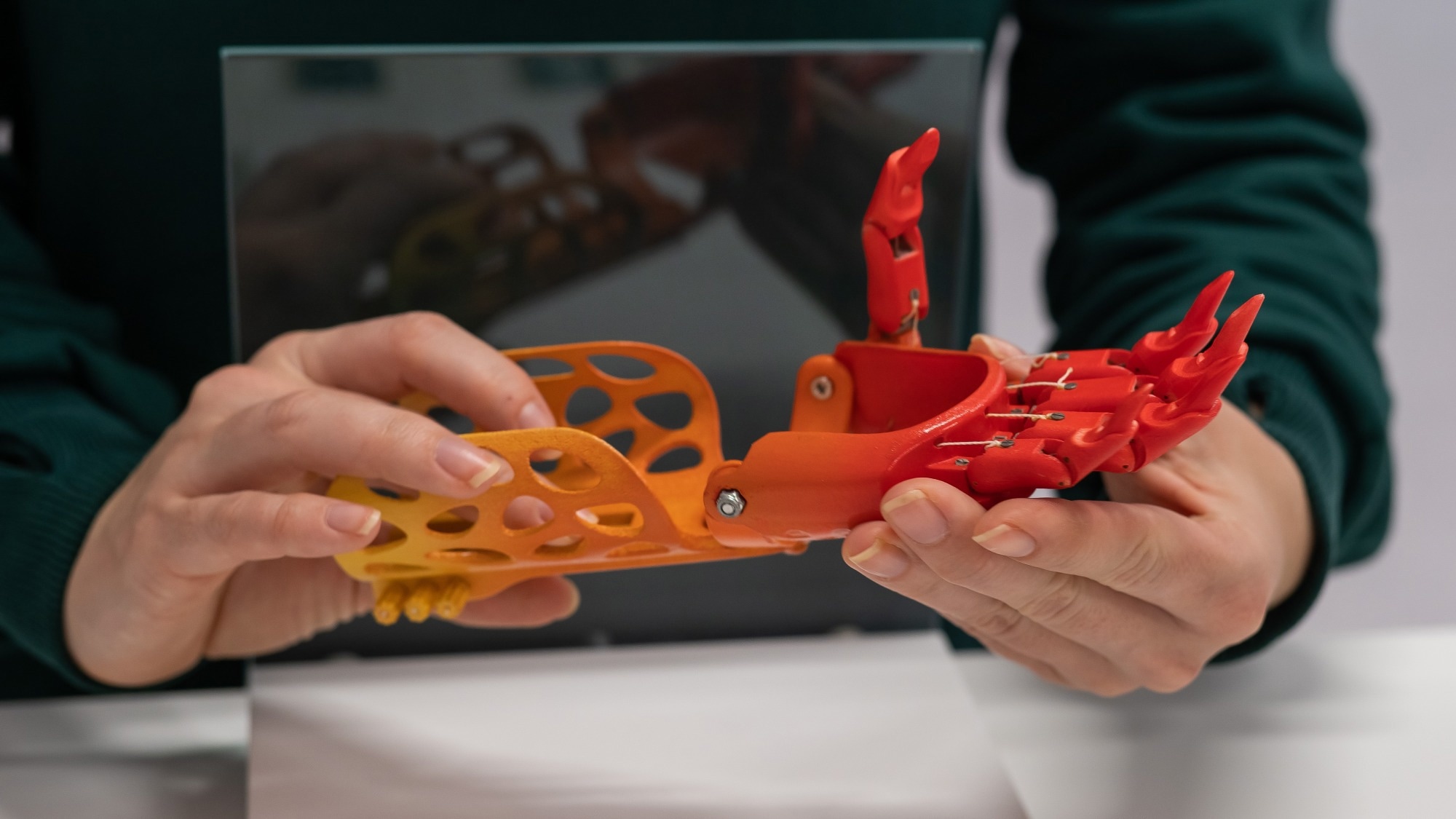Background
Telehealth as social innovation
Improving access to prosthetics with social innovation
The future of social innovation in healthcare delivery
References
Further reading
Social innovation is the development and application of new methods, tools, and solutions that bring forward change. This is generally achieved through organizational or conceptual improvements. Specifically, these methods intend to create a positive difference regarding well-being on both a community and individual level.
 Image Credit: aorpixza/Shutterstock.com
Image Credit: aorpixza/Shutterstock.com
Background
Social challenges drive the basis of social innovation. These challenges include access needs, poverty, discrimination, and inequality. Therefore, social innovation targets meeting those needs specifically. In terms of healthcare delivery, this could look like improved access to services or medication.
Changes that are made through social innovation take account of unmet needs on both a holistic and structural level. This means that social innovation can affect people on a micro or macro level. On a micro level, social innovation could provide specialized support to suit an individual person’s needs. In contrast, on a macro level, it would account for community-wide needs or systemic issues.
Social innovation has a range of different applications and uses, including a number in healthcare settings. Often, it is fundamental to develop disability aids and assistive devices, particularly in areas where the uptake of such things can be blocked. It has also been key to creating some aspects of healthcare that are now relatively commonplace, such as telehealth.
Telehealth as social innovation
Telehealth is the remote provision of healthcare delivery on a promotive, preventative, and curative basis. Telemedicine, on the other hand, is a clinical service that offers remote monitoring and diagnostics. When telehealth first began, it was mostly in the form of telephone calls, although now it also includes Voice over Internet Protocol (VoIP) and virtual wards.
Telehealth is an example of social innovation in motion because it allows the delivery of healthcare to communities that may otherwise be subject to access barriers. For instance, healthcare delivery can reach more people in rural communities using telehealth strategies. It can also increase access to medications that could contribute significantly to public health issues.
Rural communities in the state of Georgia have used a sustainable telehealth model since the late 1980s. Because of the size of the public health district in that area, it could be difficult for patients to access clinics, meaning that remote access to them is desirable.
Pre-exposure prophylaxis (PrEP) access is being increased using different technology-based and telehealth initiatives. PrEP is a form of medication that can be administered either as a pill or hypodermically to prevent the transmission of Human Immunodeficiency Virus (HIV). These remote programs seek to increase the uptake, availability, and adherence to medication.
Remote PrEP programs are sometimes called Tele-PrEP. Tele-PrEP seeks to minimize the gaps in the medication’s reach and the quality of care provided alongside it as a form of social innovation. The states of California and Iowa both offer state-run Tele-PrEP programs, in addition to a number of smaller communities across the United States.
What is Telehealth & How Does Telehealth Work ? - Kalkine Media
Improving access to prosthetics with social innovation
Social innovation has improved the delivery of healthcare via the development of novel prosthetic solutions. This is particularly significant for countries wherein financial issues have impacted the healthcare system, or where there is reduced access to the materials required to create prostheses.
A lot of prosthetics, both of the typical and more experimental varieties, can require a lot of lead time to create. This is because of both the financial requirements for creating them and the high levels of expertise required to create them. Therefore, innovating them is crucial in improving their delivery.
Myoelectric prosthetics created using open-source resources have been proposed as an innovative approach for delivering healthcare in Colombia. Researchers compared a range of open-source hardware systems to assess what would best address the relevant social challenges. From this, five sustainable prostheses were developed for a group of upper-extremity amputee patients.
Other socially innovative prosthetics have been created using 3D printing techniques. These prosthetics take less lead time to develop and are cheaper than most other alternatives. This means that 3D printing could help break down healthcare delivery barriers using social innovation.
A paper was published in 2020 outlining the development of affordable 3D-printed hand prosthetics. They were developed to function ergonomically like a lightweight glove. The patients this was developed for had transmetacarpal amputation, meaning that a section of the palm and a number of fingers were missing.
The 3D-printed prosthetics for transmetacarpal amputation cost around 20 United States Dollars to produce. This means that they are more accessible in countries with lower financial capital levels, so they addressed the social challenge with innovation.
 Image Credit: Reshetnikov_art/Shutterstock.com
Image Credit: Reshetnikov_art/Shutterstock.com
The future of social innovation in healthcare delivery
Social innovation has greatly contributed to the developments in improving healthcare delivery. Conceptually, social innovation appears that it could incite a great deal of change, although researchers suggest that social innovation has not yet reached its full potential in relation to healthcare.
A key to supporting a socially innovative future in healthcare would be gatekeepers, leaders, and healthcare professionals taking input from service users to support the process of innovation. Specifically, researchers suggest that it is crucial for gatekeepers to connect with disabled people and carers during the process of innovation as collaborators, as opposed to considering them as “passive end-users”.
Researchers and public health professionals have stressed the importance of using social innovation in an inclusive manner, particularly to achieve disability justice and equity. In light of this, the term “inclusive innovation” has been coined and presented as a goal that social innovation should aspire to.
References
- Niekerk, L., Manderson, L., & Balabanova, D. (2021). The application of social innovation in healthcare: a scoping review. Infectious diseases of poverty, 10(1), pp. 1-25.
- Gyllinsky, J. V. et al. (2019). Patient self-assessment of 3D printed upper-extremity prosthetics. In 2019 IEEE International Conference on Smart Computing (SMARTCOMP) pp. 205-207.
- Touger, R., & Wood, B. R. (2019). A review of telehealth innovations for HIV pre-exposure prophylaxis (PrEP). Current HIV/AIDS Reports, 16, pp. 113-119.
- Noel, K., & Ellison, B. (2020). Inclusive innovation in telehealth. NPJ digital medicine, 3(1), pp. 89.
- Singh, R., Mathiassen, L., Stachura, M. E., & Astapova, E. V. (2010). Sustainable rural telehealth innovation: a public health case study. Health Services Research, 45(4), pp. 985-1004.
- Dawson, L., Frederiksen, B. & Gomez I. (2022). PrEP Access in the United States: The Role of Telehealth. KFF, HIV/AIDs.
- Alturkistani, R., Devasahayam, S., Thomas, R., Colombini, E. L., Cifuentes, C. A., Homer-Vanniasinkam, S., ... & Moazen, M. (2020). Affordable passive 3D-printed prosthesis for persons with partial hand amputation. Prosthetics and orthotics international, 44(2), pp. 92-98.
- Noel, K., & Ellison, B. (2020). Inclusive innovation in telehealth. NPJ digital medicine, 3(1), pp. 89.
Further reading